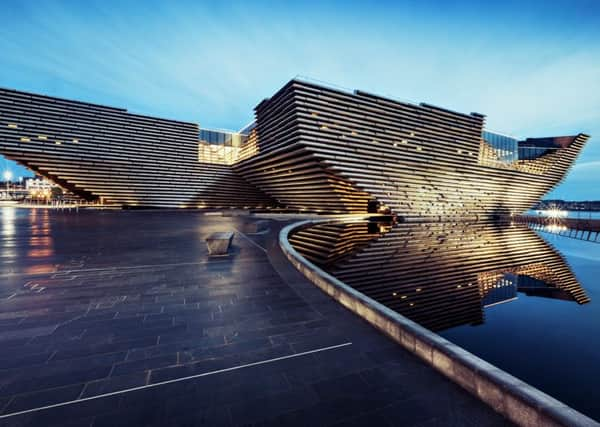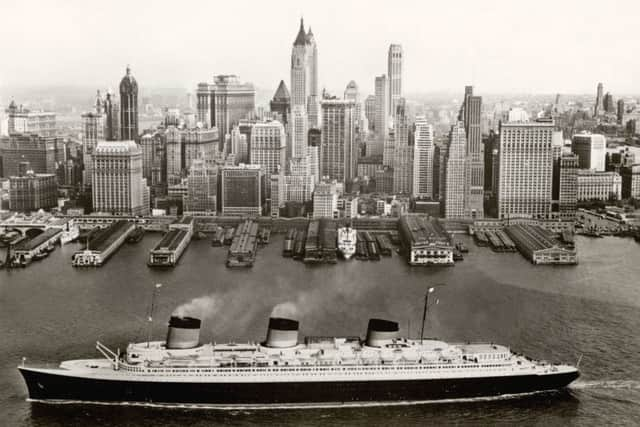Review: The V&A Dundee


The V&A Dundee opens to the public on Saturday. Just to get it built is a major achievement, but it is a fittingly spectacular building too, though more so perhaps inside than out. Designed by Japanese architect Kengo Kuma, seen from the railway bridge the new building seems just another grey mass in the city’s jumbled waterfront. Then, however, you notice the likeness of a ship’s prow sticking out from the shoreline. As you approach more closely, the building looks like nothing so much as a great pile of concrete beams. Separated vertically and sightly irregular, their effect is emphatically horizontal. In contrast, there are no simple verticals in the elevation, nor indeed even right angles in the plan. As a result, the building seems to be all angles and corners with sharp edges.
As you enter, the contrast to the grey exterior is dramatic. The atrium is the full height of the building and filled with light. A wide stair rises around it to an upper floor, part of the same huge space, but opened further by views from big windows out across the Tay and back towards the city. The exhibition spaces begin here. A deconstructed Jaguar car demonstrates how its design evolved from sculptured model to sophisticated machine. Along one wall Design Relay is a small exhibition of a design challenge undertaken collectively by groups of students in Dundee, Orkney, Shetland, Caithness, Govan and Aberdeen. Most ingenious is a polar bear warning system for Arctic explorers designed by students from Dundee and proven to work.
Advertisement
Hide AdBut the heart of the whole enterprise is the display of Scottish design since 1500. The museum’s director Philip Long eventually refined the project’s broader ambitions to this single purpose: to tell the brilliant but largely untold story of Scottish design. It is too diverse a story for a single narrative, so a series of individual displays range in content from cast iron to clothes, furniture and textiles, from ships and architecture to linoleum, jewellery and theatre design. This is also where the museum’s V&A title becomes reality. There are many other lenders, but overall this is a collaborative enterprise with the V&A in London, the world’s greatest design museum. In its vast holdings, the V&A has numerous Scottish treasures. Many never see the light of day. Here they are repatriated. It is a delight for us, but it also fulfils the V&A’s duty to reach out beyond the English metropolis which is its home. This is its first major outreach in the UK and it has been one of the principal drivers for this project from the start. Here for instance among many other objects from the V&A’s collection are a 16-century book of hours called the Playfair Hours, an early 18th-century Highland targe, a Paisley shawl, a picture of the cast iron bridge in St Petersburg made in Russia by an offshoot of the Carron Iron works, an enamelled casket by Phoebe Anna Traquair and a pair of lady’s combinations made by Elliot of Hawick around 1906. There are other major lenders too, and at the heart of the whole display is the Oak Room by Charles Rennie Mackintosh from Glasgow Museums. Rescued from demolition in 1971, it is now restored and displayed as a whole for the first time since then.


The design display is only one part of the new museum. It is partnered by a huge area for temporary exhibitions. The opener is Ocean Liners, an exhibition from the V&A, an appropriate partnership this time, and an appropriate show as the Clyde was birthplace to so many of these great ships. There will be other partners in future shows, but if this is how the new museum intends to carry on, it is a fittingly ambitious beginning. The ocean liners were floating palaces for the very rich. Here are the clothes they wore, ship models, art works and furniture from the fabulously luxurious interiors, film of life on board and much more to inform, intrigue and delight - and that surely is what a museum should always do.